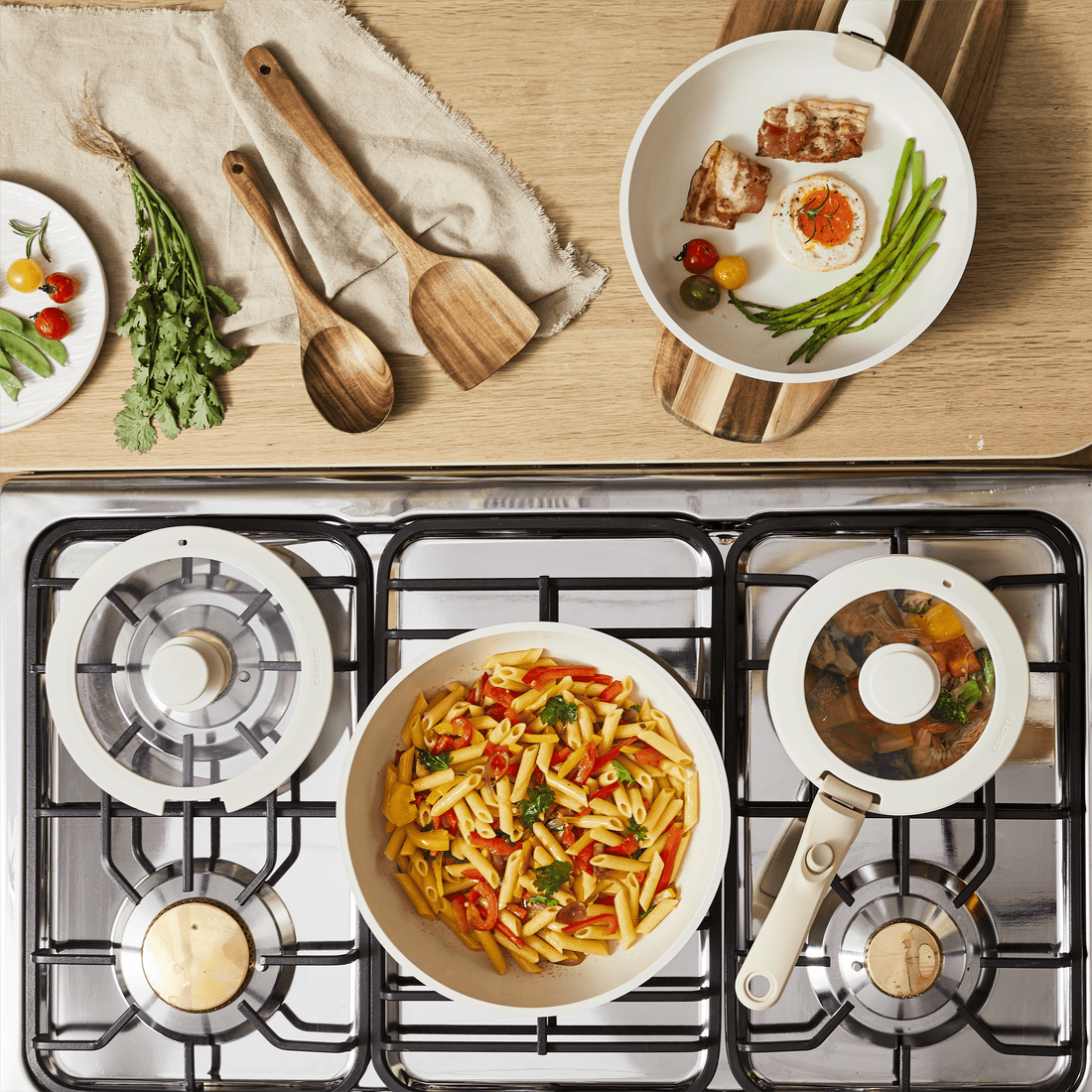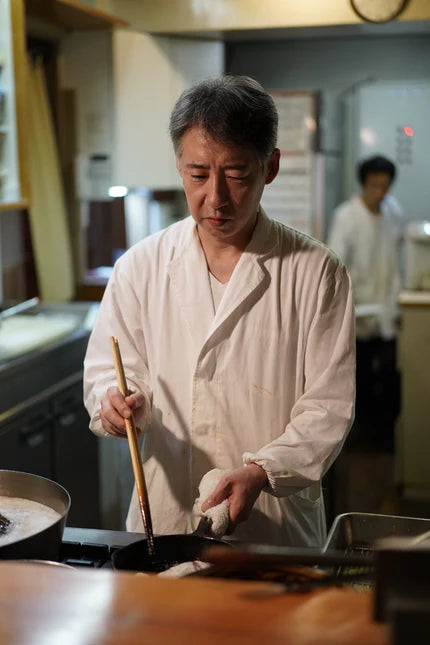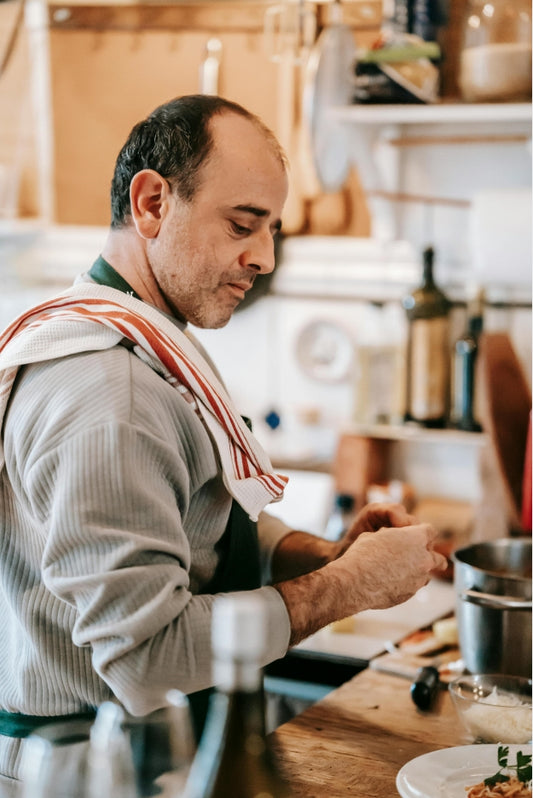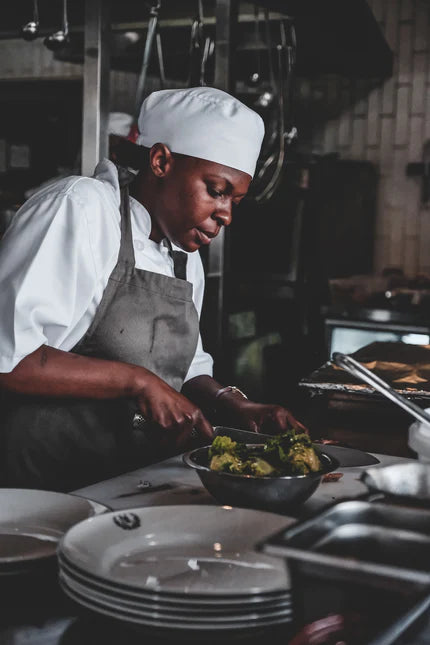Besides cookware in your kitchen, one of the most important things you must have in the kitchen is—Stove. It has many choices and different types available on the markets, and choosing the proper stoves is equally essential for the right cookware. Especially if you are going to move into a new house with an empty kitchen. Yet selecting a suitable stove and matching your needs would be a question.
Now let’s dive into it and see the 3 common stoves and their pros & cons.
Gas Stove:
A gas stove is a stove that is fueled by combustible gas such as syngas, natural gas, propane, butane, liquefied petroleum gas, or other flammable gas. It offers an instant flame that provides fast heating and because of that, controlling the flame to adjust the heat for your cooking is one of its top pros. Because every cooking needs a specific temperature to make it perfect, it could guarantee your food won’t be overcooked or ruin your pan. Also, when you finish cooking and turn off the gas stove, you’ll notice it cools down quickly.
In addition, it’s suitable for all kinds of cookware that are made of different materials without worrying about damaging them.
However, you also need to consider its drawback——safety, as its exposed flame may not be friendly to your kitchen. You need to fully close the gas opener after cooking to prevent gas leaking. And keep your children far away from the stove in case they directly touch the top or even do some “scientific experiments” while you are busy with other things. It also requires regular cleaning because there might be some oil stains or food residue stuck in its corner, and it’s hard to clean as time passes.

Electric Stove:
An electric stove or electric range is a stove with an integrated electrical heating device to cook and bake. The heating switch is marked with numbers representing low, medium, and high heat. There’s the resistance coil — metal coil under the glass. Electricity heats that up, then the heat passes through the ceramic top (or other interfaces), and only then does it reach the pan. This means it’s a slow-cook stove that usually requires longer than the gas stove. And it’s slow to respond when adjusting the temperature.
Unlike the gas stove, it’s welcomed by a lot of families that have children due to its budget-friendly and ease of cleaning, as it doesn’t have a naked flame that has a potential danger to kids.
Induction Stove:
It’s also called “induction hob” or “induction cooktop”), a cooking vessel with a ferromagnetic base is placed on a heat-proof glass-ceramic surface above a coil of copper wire with an alternating electric current passing through it. It may sound like an electric stove to you, and yes, it’s considered the third technology of electric stove variants, but it transfers heat directly to the cookware’s bottom, making it heats way faster than other stoves. And because of this, it’s hard to control the temperature when cooking. For example, if you want to fry a perfect egg, you must keep adjusting the temperature to prevent overcooking.
But it must be compatible with specific cookware because induction tops typically will not heat copper or aluminum vessels. After all, the magnetic field cannot produce a concentrated current. Cookware like cast iron, enamel pot, and stainless steel would be a wise decision, and if you have stainless bottom cookware, it also works!
The induction cooker is safe to use and generally has low-thermal expansion glass-ceramic tops; it requires extra caution when using the pan. Moving around or dropping on the surface could scratch the surface. Gently lifting and putting would be a wise move.
Induction Introduction and Experiment from Adam Ragusea
Conclusion:
After all these introductions, I am pretty sure you already have a clear answer. Basically, all these stoves can support daily cooking. Choosing the one that meets your needs would be a good choice and investment.
But please don’t worry if you still have no clue, you can still choose suitable cookware that supports all these stovetops. Cookware like granite stone pots and pans can meet all your needs. It’s compatible with all stoves available on the market; the granite-coated cookware’s inner core warms up quickly and holds in heat well to reduce your overall cooking time & save your gas and electricity costs.
Choosing the right cookware and stoves can level up your cooking experience for the long run.
Sources:
Wikipedia: Gas stove/ Electric stove/ Induction Cooking




